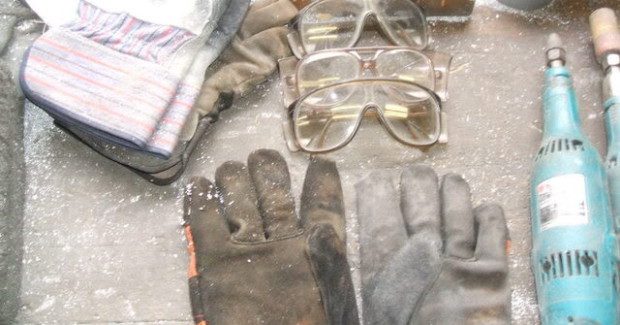Anticipated Growth in Manufacturing Should Refocus Worker Safety
After adding nearly 570,000 jobs over the past four years, more growth is expected as production facilities re-shore to the U.S. Guest columnist Scott Corriveau explains why corporate executives, safety officials and equipment manufacturers must work together to identify unmet safety needs and prepare a new labor force for the hazards they may face.
Posted: April 23, 2014
Earlier this year, President Obama outlined a plan to increase the number of jobs in the U.S. by promoting the development of cutting-edge products in several manufacturing sectors, including digital manufacturing, lightweight metals manufacturing, and 3D printing.
These “manufacturing innovation hubs” – two of which have already been established in Youngstown, OH and Raleigh, NC – will bring together industry leaders and research institutes to inspire new manufacturing processes and establish our nation as an ideal location to start new businesses.
While a focus on the manufacturing sector may push forward economic recovery, it also signals a potential wave of new workers who may not be adequately prepared for work in high-risk environments. Safety officials and industry executives must revisit their policies and implement changes to maintain optimal safety in the workplace.
New employees, regardless of age or expertise, have a disproportionately high rate of workplace injuries. These injuries not only have serious implications for worker productivity, but can also cost companies millions in medical fees, lost time due to injury, and higher insurance costs.
The National Safety Council estimates the annual total cost of work-related deaths and injuries to be over $170 billion [1] and a similar 2012 study from the U.S. Bureau of Labor Statistics found that of the 502,800 nonfatal workplace injuries that occurred in the manufacturing industry, nearly 30 percent occurred in the primary metal, fabricated metal products and machinery manufacturing sectors. [2]
While these are staggering statistics, organizations like the Occupational Safety and Health Administration (OSHA) are frequently drafting mandates and updating protocols to inform safety managers on limiting risks and avoiding accidents. Safety training programs and employee certifications help ensure that the necessary precautions are taken to protect workers. Yet, many manufacturing environments involve hazards that cannot be reduced through safety training alone.
Safety officials rely on personal protective equipment (PPE) to provide an additional layer of protection for workers, making it imperative for equipment manufacturers to keep up with the burgeoning industry and the increasing demands for workers. If PPE hinders productivity, workers will avoid using it, increasing the risk of injury.
Like those companies in the manufacturing innovation hubs, equipment manufacturers must combine new technology and research insights to create equipment solutions that uphold safety standards, maintain performance and comfort, and encourage workers to use them.
For example, we have launched Worker Experience Innovation, a technology-based product platform that utilizes worker insights to guide the development of cutting-edge products. Through information sharing and ongoing research, we hope to advance safety in the workplace and lead others to meet the new and emerging demands of the manufacturing industry.
In the past four years alone, the manufacturing sector has created nearly 570,000 jobs, and this number is expected to increase as more companies consider moving production factories to the U.S. Corporate executives, safety officials, and equipment manufacturers must work together to identify unmet safety needs and prepare a new labor force for the hazards they may face.
Notes:
[1] National Safety Council. NSC Injury Facts® 2012 Edition: A Complete Reference for Injury and Death Statistics. (2012)
[2] Bureau of Labor Statistics, U.S. Department of Labor. Employer-Reported Workplace Injuries And Illnesses News Release. 2012. http://www.bls.gov/news.release/pdf/osh.pdf












